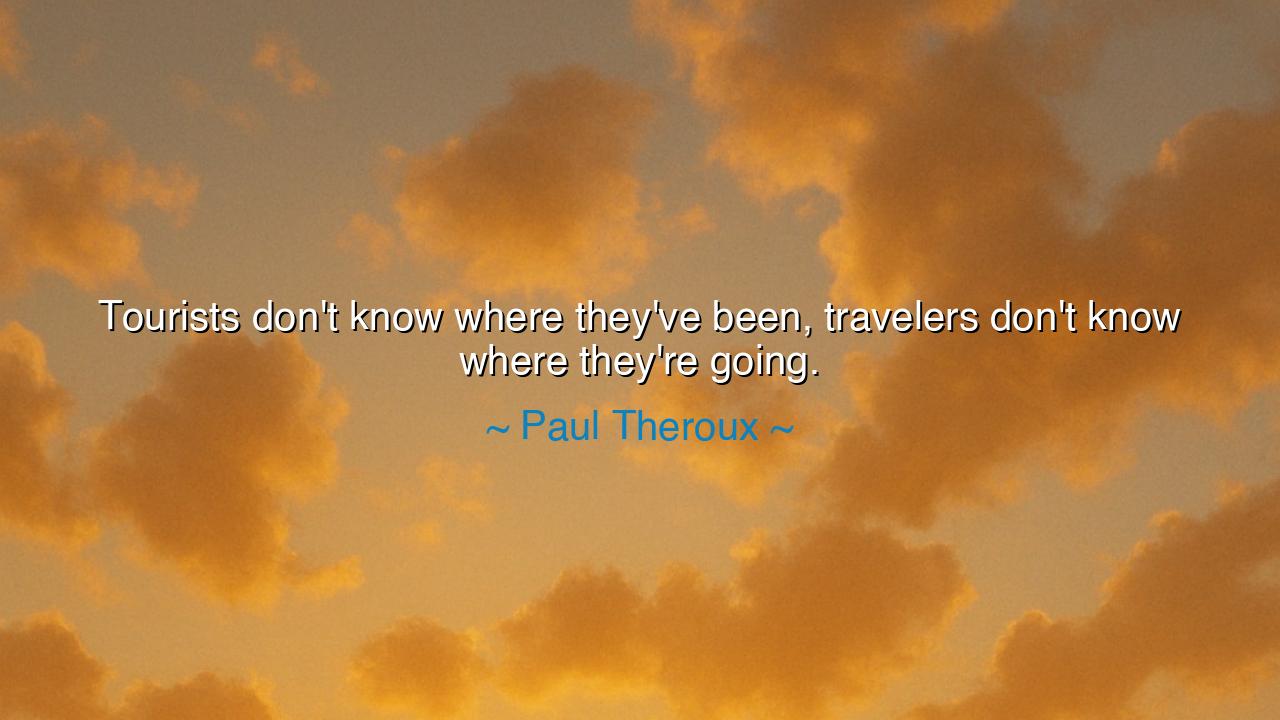
Tourists don't know where they've been, travelers don't know






Hear, O children of the road, the words of Paul Theroux, master of journeys, who declared: “Tourists don’t know where they’ve been, travelers don’t know where they’re going.” At first, these words sound like paradox and jest, yet within them lies a wisdom as old as wandering itself. For Theroux speaks of two ways of moving through the world: the tourist, bound by itinerary and image, who may pass through places yet never touch their soul; and the traveler, untethered, who moves without certainty of destination, yet with openness to discovery.
The ancients knew this truth well. The Israelites, wandering through the desert for forty years, were not tourists seeking photographs of Canaan; they were travelers, shaped by the uncertainty of the path. Their destination was promised, but the way was hidden, and in that wandering their people were forged. Likewise, Odysseus did not know where his storms would cast him. Each shore was a surprise, each encounter a lesson. This is the spirit of the traveler—to surrender control of the road, to let the journey, rather than the map, carve wisdom into the heart.
By contrast, the tourist clings to certainty. He knows his hotel before he departs, his sights before he sees them, his souvenirs before he touches them. Yet in this certainty, he blinds himself to the life of the land. He returns with pictures but no transformation, with a checklist completed but a heart untouched. This is why Theroux says the tourist does not know where he has been—because he has only skimmed the surface, seeing with eyes but not with soul.
Consider the story of Ibn Battuta, the great Moroccan wanderer. He set out not with rigid plans but with a hunger for the unknown. His journeys carried him across deserts, seas, and kingdoms, often with no certainty of what lay beyond the next horizon. And because he did not confine himself to a predetermined path, he discovered not only places but entire ways of life that others never saw. He was a traveler, and though he did not always know where he was going, the world revealed itself to him more fully than to any carefully mapped tourist.
Theroux’s words also remind us of the humility required for true discovery. The traveler admits, “I do not know.” He does not demand the world bend to his expectations; he allows himself to be shaped by surprise, inconvenience, and wonder. In contrast, the tourist believes he knows already what he will see. But in thinking he knows, he misses the mystery. The traveler’s ignorance becomes wisdom, while the tourist’s certainty becomes blindness.
The lesson, then, is this: if you would truly know the world, loosen your grip upon plans and enter it as a student, not as a conqueror. Do not cling so tightly to itineraries that you miss the song of the street, the kindness of a stranger, the beauty of an unexpected turn. Do not fear not knowing where you go, for in that not knowing lies the possibility of transformation. The road teaches best when it is allowed to surprise.
Practically, this means embracing flexibility in your journeys and in life. Walk slowly. Speak to locals. Eat what is offered. Let delays and detours become part of the story. Seek depth, not breadth; connection, not collection. Be willing to not know, and in that willingness, find truth. For the world belongs not to those who try to control it, but to those who allow themselves to be changed by it.
So let these words be passed on: “Tourists don’t know where they’ve been, travelers don’t know where they’re going.” The first is blind though he thinks he sees; the second is open though he admits he does not know. Choose the way of the traveler. For though his path is uncertain, his heart is certain to be enlarged, and his spirit certain to be awakened by the wonders of the road.






AAdministratorAdministrator
Welcome, honored guests. Please leave a comment, we will respond soon